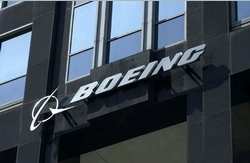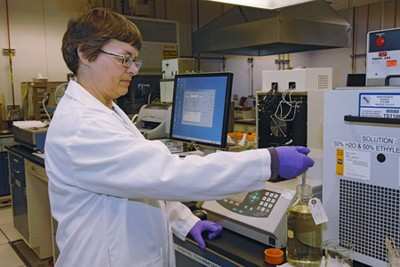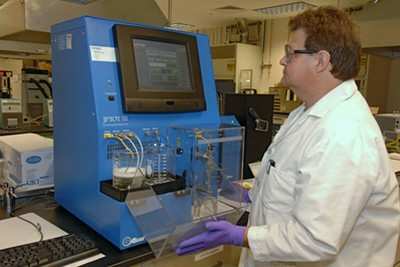Fri, Sep 28, 2007
Demonstration in 2008 targets the viability of alternative
fuels for reducing carbon emissions
 Boeing, Air New Zealand
and Rolls-Royce have agreed to a Memorandum of Understanding to
conduct a biofuel demonstration flight designed to help accelerate
the development of viable and sustainable alternative fuels for
commercial aviation uses. Boeing is exploring second-generation
biofuel feed stocks and processes that have the potential to reduce
greenhouse gases throughout their entire lifecycle.
Boeing, Air New Zealand
and Rolls-Royce have agreed to a Memorandum of Understanding to
conduct a biofuel demonstration flight designed to help accelerate
the development of viable and sustainable alternative fuels for
commercial aviation uses. Boeing is exploring second-generation
biofuel feed stocks and processes that have the potential to reduce
greenhouse gases throughout their entire lifecycle.
The demonstration flight is planned for the second half of 2008
using an Air New Zealand Boeing 747-400 equipped with Rolls-Royce
engines. Boeing is in discussions with fuel-source providers around
the globe to identify potential biofuels that are available in
suitable quantities for laboratory and jet-engine performance
testing and in compliance with stringent aviation requirements.
Additional details will be announced closer to the actual
demonstration flight date.
"Our near-term goal in this pioneering effort is to identify
sustainable alternative bio-jet fuel sources for the planes that
are flying today," said Craig Saddler, president of Boeing
Australia. A significant first step is identifying progressive fuel
sources that will provide better economic and environmental
performance for air carriers, without any change to aircraft
engines or the aviation fuel infrastructure."

The Air New Zealand bio-jet fuel demo flight will highlight the
suitability of environmentally progressive fuel solutions (bio-jet
fuels) that differ from traditional biofuel development. Bio-jet
fuels will incorporate second-generation methodologies relative to
sustainable feedstock source selection and fuel processing, which
are uniquely suited for aerospace applications. These bio-jet fuels
can potentially be blended with traditional kerosene fuel (Jet-A)
to reduce dependency on petroleum-based fuels. Additionally,
sustainable bio-jet feedstock sources avoid deforestation practices
and potential competition with global food resources, while helping
to lower aviation carbon dioxide outputs.
"This test flight is another step in our plan to lead the globe
in development of the most environmentally responsible airline,"
said Air New Zealand Chief Executive Officer Rob Fyfe. "We have
already taken large steps toward this goal by introducing
fuel-efficient Boeing 777s and we eagerly await the first of our
787-9 Dreamliners which will burn 20 percent less fuel than the
planes they replace."

Air New Zealand is a launch customer for the Boeing 787
Dreamliner, scheduled for entry into service in 2008. Air New
Zealand will receive its first 787-9 in 2010.
More News
Minimum Friction Level The friction level specified in AC 150/5320-12, Measurement, Construction, and Maintenance of Skid Resistant Airport Pavement Surfaces, that represents the m>[...]
Aero Linx: Airpower Museum The APM owns 30 acres on Antique Airfield, including the south half of the N-S runway. It consists of three hangars, an annex, and a library. The museum >[...]
Patient Told The First Responders That The “Man Who Was In The Plane Was Flying At The Time Of The Accident And Had Overshot The Runway They Were Attempting To Land On.&rdquo>[...]
Klyde Just Can't Believe This Has Gotten To This Point... FMI: www.klydemorris.com>[...]
Also: Duffy Wants $$$, KS Airports, Morningside U’s Aviation School, New Airstrip In ID After 6 were killed in a helicopter crash over the Hudson River, several US Representa>[...]
 ANN's Daily Aero-Term (06.02.25): Minimum Friction Level
ANN's Daily Aero-Term (06.02.25): Minimum Friction Level ANN's Daily Aero-Linx (06.02.25)
ANN's Daily Aero-Linx (06.02.25) NTSB Prelim: Champion 7ECA
NTSB Prelim: Champion 7ECA Classic Klyde Morris (From 06.10.22)
Classic Klyde Morris (From 06.10.22) Airborne 05.30.25: Anti-Helicopter Bill, PW Strike Done, All-Electric Bristell
Airborne 05.30.25: Anti-Helicopter Bill, PW Strike Done, All-Electric Bristell





